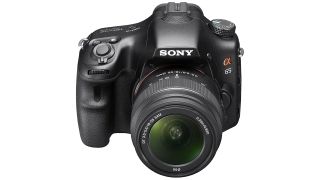The A-mount range includes the A68, A99 II and A77 II but it’s not massively surprising news to see it be dropped. The last Sony DSLR model to be announced was the A99 II back in 2016 and, since then, the nearest to anything new DSLR related was an adapter to allow E-mount camera owners to use A-mount lenses. Otherwise, Sony has been focusing all its efforts on its mirrorless ranges, like the Alphas. It’s been a good move for the company too with the likes of the mirrorless Sony Alpha A7 III featuring prominently in most sites’ run downs of top-end cameras, as well as hitting the number two spot on our look at the best mirrorless cameras (opens in new tab). That’s a far cry from Sony’s omission from the best DSLR camera (opens in new tab) roundup we only recently updated. Sony has been a driving force for mirrorless models with the likes of the 61-megapixel A7R IV, 12-megapixel A7S III that’s well designed for video, and the hybrid 50-megapixel A1. There were suggestions that Sony was the biggest seller of mirrorless cameras in 2020 (opens in new tab) so it’s a logical shift. It also comes at a time when other companies have done similar with the likes of Canon and Nikon also focusing on mirrorless cameras over ageing DSLR products. However, given the wealth of existing DSLR users, and the huge number of existing DSLR lenses out there - both new and second-hand - all the major manufacturers are offering adaptor solutions to allow people to bring their existing lenses to new mirrorless camera bodies. So, what does that mean if you own a DSLR camera? Not much fortunately. Your camera will still continue to work as well as it always did. Where things are likely to differ is when it comes to upgrade time. When you’re seeking out a new camera, we’d heartily recommend a mirrorless model, regardless of what camera system you currently use. While mirrorless models have traditionally trailed in terms of autofocus capabilities and battery life, newer models are fixing these shortcomings. What’s more, firmware updates will only continue to improve mirrorless models. If you’re confused by the key differences, check out our look at mirrorless vs DSLR (opens in new tab) to understand where the distinctions lie. Effectively, it’s the future and Sony’s apparent decision to drop DSLRs would seem to reflect the company’s thoughts on the matter.
